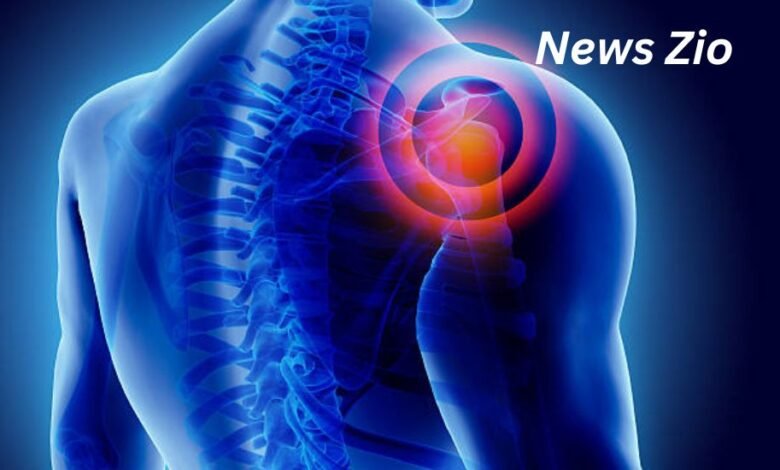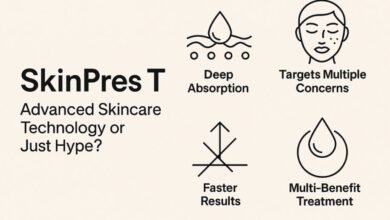Inomyalgia: Deep Muscle Pain, Symptoms, and Management

In recent years, discussions about chronic pain have increasingly appeared not only in medical literature but also across online blogs, forums, and patient support communities. Among these conversations, a term has begun to surface more frequently: inomyalgia. Unlike established conditions such as fibromyalgia or myofascial pain syndrome, inomyalgia does not yet hold formal recognition in diagnostic manuals. Still, it resonates with many people who experience persistent, deep-seated muscle pain that defies easy explanation.
This article provides an in-depth exploration of inomyalgia as it appears in blog discussions and patient narratives. We will cover its proposed definition, symptoms, causes, overlap with related disorders, diagnosis challenges, and management strategies — all while acknowledging the current lack of medical consensus.
What Is Inomyalgia?
The word inomyalgia is built from two parts: “ino” (Greek for fiber or sinew) and “myalgia” (muscle pain). Taken together, it suggests pain originating in the deep muscle fibers. Blog writers and alternative health advocates often describe it as chronic muscle pain that feels rooted in deeper tissues, not just surface-level soreness.
Unlike fibromyalgia, which is characterized by widespread pain amplification in the central nervous system, inomyalgia is framed as a localized or systemic muscle-fiber issue. However, it is important to stress: inomyalgia is not an officially recognized diagnosis in systems like the ICD-11 or DSM.
Symptoms Associated with Inomyalgia
Blog discussions of inomyalgia often highlight a constellation of symptoms that mirror those of other chronic pain disorders but with an emphasis on deep muscular sensations. Commonly mentioned symptoms include:
-
Persistent muscle pain and tenderness
Individuals describe a sensation of pain that feels deeper than typical soreness, sometimes described as “burning” or “aching.” -
Fatigue and low energy
Fatigue is not merely a consequence of pain; many sufferers report constant tiredness, even after rest. -
Sleep disturbances
Poor sleep quality, insomnia, or non-restorative sleep are widely reported, often aggravating pain cycles. -
Cognitive symptoms (“brain fog”)
Problems with memory, focus, and clarity of thought can accompany physical pain. -
Flares and variability
Many blogs note that symptoms worsen during times of stress, poor sleep, excessive exertion, or changes in weather.
The overall picture is of a complex, fluctuating condition that impacts physical, mental, and emotional health.
Inomyalgia vs. Fibromyalgia
The comparison to fibromyalgia arises repeatedly in blog posts and patient forums. While both terms describe chronic pain syndromes with fatigue and sleep issues, there are subtle distinctions in how advocates describe inomyalgia:
-
Fibromyalgia: Recognized medical condition characterized by widespread pain sensitivity, central sensitization, and multiple tender points.
-
Inomyalgia: A descriptive term focusing on deep muscle fibers as the root cause, often suggested as a subset or variant of fibromyalgia.
Some bloggers go further, presenting inomyalgia as a “missing link” for people who experience fibromyalgia-like pain but do not meet official diagnostic criteria.
Relationship with Myofascial Pain Syndrome
Another comparison often made is with myofascial pain syndrome (MPS). MPS involves specific trigger points within muscles that cause referred pain. Unlike MPS, inomyalgia is described as more diffuse, without clear trigger points, affecting larger areas of muscle tissue.
Thus, blog authors frame inomyalgia as existing somewhere between fibromyalgia and MPS, with overlapping but distinct features.
Theories About Causes
Since inomyalgia is not a formally studied condition, most causal explanations are speculative. Still, several recurring themes appear across wellness blogs:
-
Stress and central sensitization
Chronic stress is thought to sensitize the nervous system, amplifying pain perception. -
Genetic predisposition
Some bloggers speculate that genetics may make certain individuals more vulnerable to chronic muscle pain. -
Muscle fiber dysfunction
A central theme is that inomyalgia originates in deep muscle fibers that fail to function or repair properly, leading to chronic discomfort. -
Lifestyle and environmental triggers
Poor sleep, lack of exercise, nutritional deficiencies, and environmental factors are often cited as contributors.
These theories remain unverified by research but provide possible frameworks for those struggling to make sense of their pain.
Diagnosis Challenges
Since inomyalgia lacks clinical guidelines, diagnosis is a matter of exclusion. That means a healthcare provider would first need to rule out:
-
Inflammatory muscle diseases (e.g., myositis)
-
Endocrine disorders (e.g., thyroid imbalance)
-
Autoimmune conditions
-
Neurological disorders
Blood tests, imaging, and physical exams often return normal results, leaving patients frustrated. This is one reason the term “inomyalgia” appeals to some — it provides a label for a lived experience that medicine has yet to define.
Management and Coping Strategies
Without clinical protocols, management advice is often borrowed from other chronic pain syndromes like fibromyalgia. Blogs frequently recommend a holistic, multi-pronged approach:
1. Lifestyle and Rehabilitation
-
Gentle exercise and stretching
Yoga, tai chi, swimming, and low-impact workouts are emphasized. -
Physical therapy
Focused muscle strengthening and mobility exercises help prevent stiffness.
2. Medications
-
Over-the-counter pain relievers such as NSAIDs or acetaminophen.
-
Muscle relaxants or antidepressants in some cases, echoing fibromyalgia treatment strategies.
-
Neuropathic pain medications like pregabalin or gabapentin are occasionally mentioned.
3. Sleep Hygiene
Since sleep disturbance exacerbates pain, lifestyle blogs emphasize consistent routines, reduced screen time, and relaxation techniques before bed.
4. Stress Reduction
Mindfulness, meditation, journaling, and counseling are highlighted as tools to reduce stress-driven pain cycles.
5. Community Support
Many find validation in online forums and support groups, reducing the sense of isolation.
The Controversy Around Inomyalgia
The primary controversy lies in whether inomyalgia should be considered a legitimate diagnosis. Critics argue that creating new terms without evidence may confuse patients and medical providers, potentially delaying diagnosis of other serious conditions.
Supporters counter that having a descriptive label can empower patients, validate their pain experience, and encourage community support even if formal recognition is years away.
Living with Inomyalgia
Blogs emphasize that living with inomyalgia involves adaptation and self-advocacy. People who resonate with the term often stress:
-
Pacing themselves during daily activities
-
Seeking professionals willing to listen and explore symptoms holistically
-
Using self-care strategies consistently to minimize flare-ups
-
Connecting with others through forums, blogs, and awareness campaigns
In this sense, inomyalgia has become more than a medical idea; it has evolved into a community identity for those who struggle with unexplained chronic muscle pain.
Final Thoughts
Inomyalgia may not appear in medical textbooks yet, but it is undeniably a growing term in online health discussions. Whether it eventually gains scientific legitimacy or remains a patient-driven concept, it shines a light on the real struggles of people living with chronic, deep muscle pain.
The journey forward will require research, compassion, and a willingness to bridge the gap between lived experience and medical recognition. Until then, inomyalgia stands as both a placeholder and a hopeful identifier for those seeking answers.
About This Article
This article is published on News Zio, a platform dedicated to bringing clear, in-depth perspectives on health, lifestyle, and emerging medical conversations.
for more information visit News Zio .



